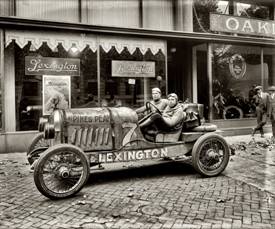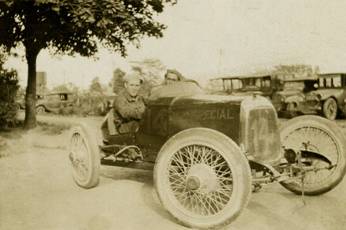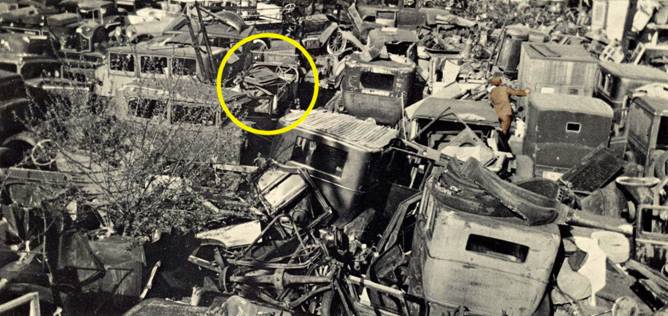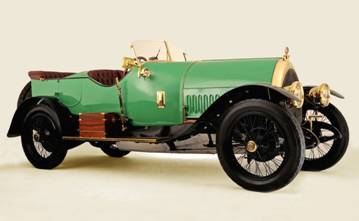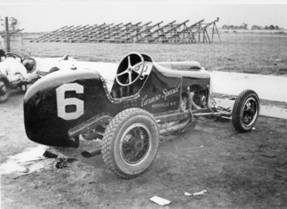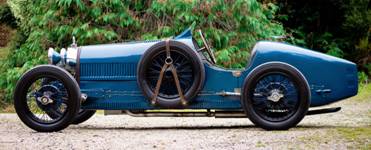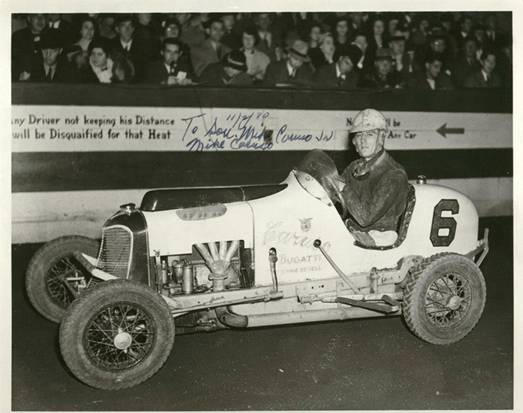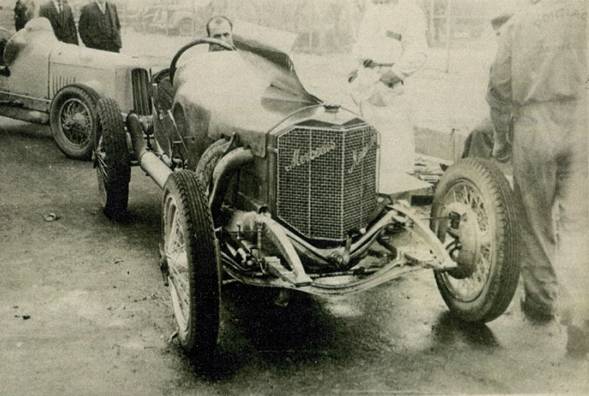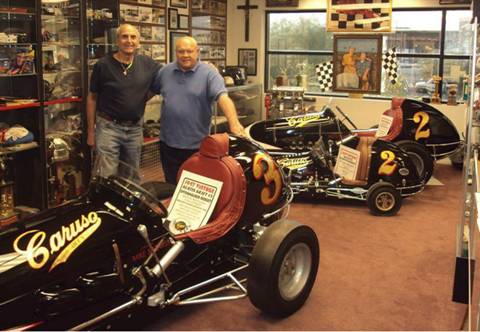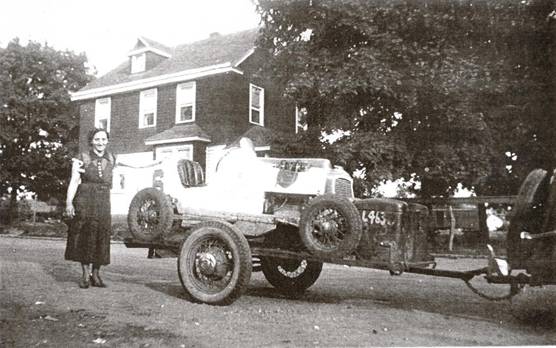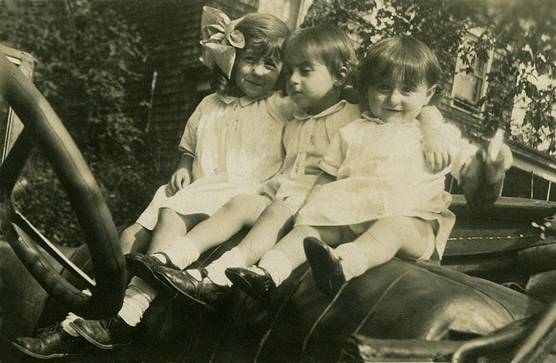|
Introduction Who was Michael Caruso?
He was a mechanic who dreamed, and who by dint of his ingenuity
and dedication got to realize his dreams through auto racing, where his
record as a builder/owner of cars was
unprecedented. He used his junkyard on
Beyond
Stock Car Racing February's Ancient
Hixtory noted that Americans had developed an appetite for stock car
races, and could not get enough of them.
Here and there, though, people had ideas about a new and
different type of racing, one with cars made by individuals, not by
automobile companies. The
cars would be inexpensive, powerful but light, and maybe small enough to
speed around the horse-racing ovals that could be found all over the
country. The idea spread
surprisingly quickly, and as people talked about creating home-built
racers, they looked hungrily at something new in Although a novice hypothetically could learn a lot
about building a car just by reading magazines like Popular Mechanics, an experienced mechanic had an advantage, and the
sharper the mechanic's mind, the greater that advantage became. * Sprint
Cars and Midgets To mangle a common saying, one cannot race apples and
oranges. For the sake of
competition, cars in any given race have to meet common standards.
The first set of standards developed for the new home-builts was
for "Big Cars" (an ironic name, given that the whole idea was to
make smaller cars). The
races proved exciting; such cars still race today, but now are called
"Sprint Cars." Subsequently,
standards were developed for even smaller cars ("Midgets").
When Midgets were introduced, they quickly caught the public's
fancy. Note the attendance figures below:
To get an idea of the appeal of Midget racing (hyped a
bit by the narrative of this British newsreel), you can use this link: https://www.youtube.com/watch?v=4yATwN7lEuU
Note that this race was run on a small banked track, constructed originally as a bicycle velodrome, rather than on the flat loose-surfaced ovals ("paved" with dirt or, less commonly, cinders) that were almost universal in the ear Midget and Sprint races also became popular in
Movie still of Clark Gable in MGM's To
Please a Lady, 1950 *** Mike
Caruso Beginnings Michael Caruso was only months old when his family came
to When he got a job in a garage, he embarked on what
would be a lifelong adventure with automobiles.
As a young teenager, he made a crude car with no brakes, but it
had what was important to the young Caruso: a powerful Excelsior
motorcycle engine. Not long
after that, he attended his first automobile race.
Two things were becoming clear: he had initiative, and he had a
love for speed. In 1922, Mike married fellow Brooklynite Rose Adessio.
They moved to * Race
Driver The earliest newspaper reference I've found for
Mike's involvement with racing appeared in the summer of 1927.
The Brooklyn Standard Union
described him as a "plucky Italian driver" who "has been one of
the stars of the auto racing season at the Metropolitan Heights
Fairgrounds" in
In September 1928, Caruso drove his "M.C. Special"
in races at the Mineola Fair, which that year was held at the old
Roosevelt Raceway. Crowds of
up to 35,000 watched the cars race on the harness track oval.
Alas, he did not complete his qualifying heat for The Long Island Sweepstakes. Mike's
car "went over the hay and over the fence" - one of four cars to
leave the course at the same point on that day.
Although thrown from his auto, he was not seriously hurt. When the new Deer Park Speedway opened a few weeks
later, Caruso was listed as one of the star drivers to compete in the
15-mile main race. Reports
of the subsequent meets at
Fran and Ro Caruso with their father's first Sprint car * The
Early Caruso Cars When Mike purchased the sprint car, its chief selling
point may have been its engine, an Anstead, likely comparable to the
Anstead engines which had powered Lexingtons to the top two positions in
the 1920 Pikes Peak Hill Climb.
Two years later, he built a new sprint car (shown in
February's Hixtory), and
another Caruso-built racer soon followed.
In addition to the ovals already mentioned, the cars raced at
other tracks in the
The
Magical Junkyard Collectables Years later, an article in the journal of The
Veteran Motor Car Club of America would look back at Hicksville
Auto Wreckers as it was in the 1930s.
Called "The Great Caruso," the article was written by no less
than a former Curator of Land Transportation at the Smithsonian.
With great reverence, he recounted his past rambles through the
junkyard, adventures undertaken with the blessing of a friendly Mike
Caruso.
On a visit in 1937, he took this photograph, in which I
have circled the unimposing remains of an Isotta-Fraschini "touring
car" from about 1913. Several
years later, Chicago-based collector Cameron Peck purchased this Tipo KM Torpedo, together with another derelict Isotta in the
junkyard, for $750. In the
nearby LIRR freight yard (just south of
Both images from bonhams.com Several years ago, the car was up for auction through
Bonhams, a centuries-old British auction house.
The Bonhams summary of its provenance noted that "The Tipo KM offered here is one of two such cars...
discovered on wealthy Long Island estates in the 1930s by midget car
racer and scrap merchant Mike Caruso, whose automobile junkyard at
Hicksville, Pristine at the age of 95, the Isotta sold in 2008 for
$1,492,000. As the car's history implies, this was not the only
rare vehicle rescued from the Caruso yard during those years.
Indeed, there was a time when seven of the world's
highest-valued collectable cars all were autos that had once resided on
West Barclay. Others of the
yard's occupants in those years were notable for different reasons,
such as a car once owned by Kaiser Wilhelm, or the first Bugatti ever
imported into the
Racers,
Plus Ingenuity Mike Caruso did not make all his interesting cars wait
for collectors to take them away. Among
his best-known racing uses of items from the salvage business were
engines from two Bugattis. The
first was a true four-cylinder engine from a Bugatti T-37, removed per
the owner's wishes, so that it could be replaced by a Ford engine
(more easily maintained in the
The second engine was an eight-cylinder, possibly from
a Type 38 that had left the
Bugatti works in Molsheim c. 1926. Such
an engine was too large for Midget racing.
Caruso "simply" cut the lower part of the engine to half its
length, so that it accepted only a single bank of four cylinders - not
a task for the faint of heart. The
result was the car recently restored and displayed in
Clearly, Mike Caruso was not afraid of trying a new
idea - and when the time was right, he also could give up on it.
Both the Bugatti-engined Midgets had their years of success, but
the sport eventually advanced beyond them.
The day came when Caruso decided to instead use Offenhauser
engines, a type that for many years was a mainstay at Stored at
Glory
Years Pre-War Caruso Racing came of age in the mid-1930s.
Mike's first Bugatti Midget, driven by Johnny Duncan, was
consistently successful. In
1935, he won the Atlantic States
Midget Auto Championship event at National Championships began two years later:
* Post-War The success resumed after World War II, a tribute to
Mike's continued inventiveness as a mechanic, and also to his ability
to run an effective team, which now drove from coast to coast, wherever
the races led. Often, it
raced eight times a week. Rose
was part of it, as were sons "Bif" (Louis) and Mike Jr., honing
their own skills as mechanics. At
the end of the long days, Rose would start to "break down" the
engines, cleaning their parts for the next day's races.
Bill Schindler drove one of Mike's Midgets in the
early post-war years, and he practically owned the track:
After Schindler's 1948 season, people called him
"The Babe Ruth of Racing." Both
Schindler and Nazaruk left Midgets in the early 1950s to race Not
Really Retirement Around 1953, Mike started focusing less on his racing,
and more on business, including his new Gulf service station at West
John and Wyckoff Streets. Ever
the mechanic, he still dabbled hands-on when he could, taking on
projects like putting a Chevy II
engine into a Midget, or testing an Offenhauser engine fitted with a
Maserati supercharger.
He also paid personal attention to Indy-style
racing. From the late 1940s
through the 1960s, his son Bif was a mechanic (and later, chief) on pit
crews for a number of cars at
*** Recognition In 1978, Mike Caruso was named to the Eastern
Old Timers Racing Hall of Fame, the first car owner to be granted
that distinction; Rose also received an award, because of her dedication
and contributions to the sport. Four years later, Hicksville's In 2003, Mike was named posthumously to the National
Midget Auto Racing Hall of Fame in Sun Prairie, In
The Museum's website at www.carusomidgetracing.com
and its Facebook page (at www.facebook.com/CarusoMidgetRacing
) are fascinating in themselves, rich in facts and photographs. The Caruso "stretched Midget" supercharged Sprint
car can be seen in the Automobile Collection of the Collings Foundation
in
And
to Conclude... Ancient
Hixtory usually covers one thing, something that happened and
ended long ago, and since has been nearly forgotten.
Not this time. Michael
Caruso's life has touched multiple worlds (e.g., racing, classic
automobiles, museums), and he is far from forgotten.
It's been a challenge for me to stitch things together into a
narrative of this length; I hope that I have not omitted anything I
should not have (but I probably did). Sadly, we often must rely only on what a man did, and
on what he left behind, to learn anything about him.
Such remnants of a life rarely reveal what kind of person someone
was. Thanks to Mike's
family, however, in his case we also have a rich collection of old
photographs, which I think tell us more.
For example, knowing what I've learned writing this
article, I look at the picture above, and in Rose I see a woman who is
proud to be photographed with something her husband has made.
Yes, he made it because of his passion for racing, but also so
that he and Rose would know a happy and exciting life.
I doubt that many other couples in Mike, fatherless from a young age, and too early forced
by circumstance to work, married Rose, and with her started a loving
family. Today, their
grandchildren recall them with pride and affection.
I believe those enduring feelings are evidence that Mike and Rose
both were good, loving people. That
sort of thing may not make for an interesting story, but it's as
important as everything else I've written here.
Sources Many thanks go to Caruso cousins Mark Thomas
(Hicksville High Class of 1975), who suggested I write this article, and
Brian Caruso for their cooperation and help.
At www.carusomidgetracing.com
the A number of sources have been noted in the text and
captions above; others include:
What
better way to close than with this delightful Caruso family photograph?
|

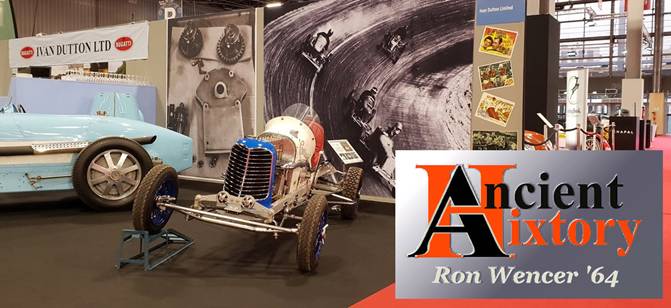


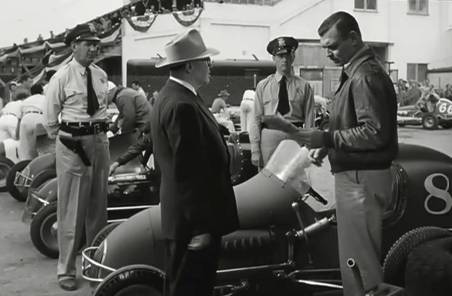
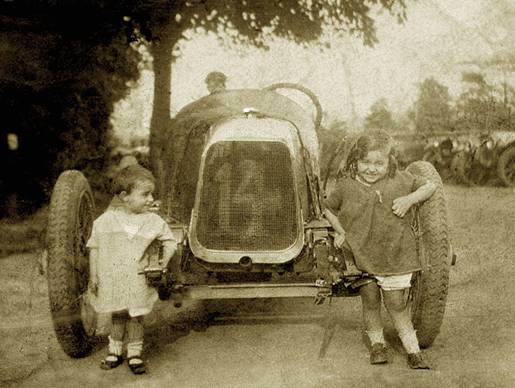 .
.